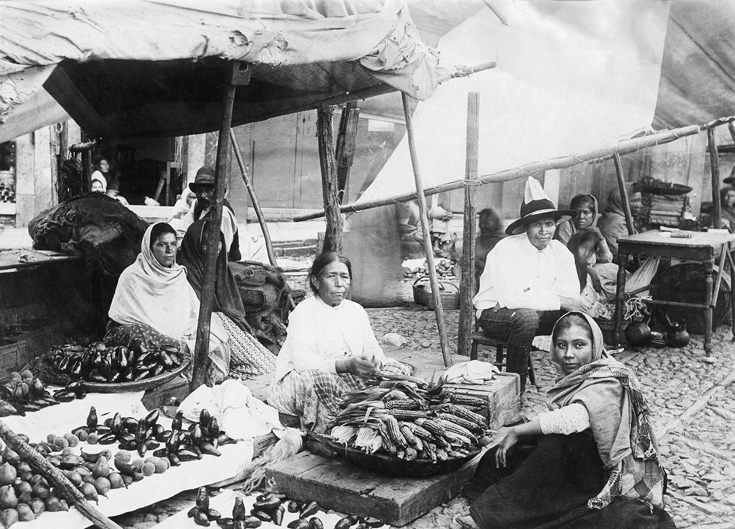A History of World Societies:
Printed Page 819
A History of World Societies Value
Edition: Printed Page 828
Liberalism and Caudillos in Spanish America
The nations that gained independence from the Spanish Empire in the Americas drew upon ideological currents that circulated in the Atlantic in the age of revolution in order to establish new frameworks of government and social organization (see Chapter 22). The dominant ideology of the era was liberalism, inspired by the founders of the United States, ideologues of the French Revolution, and economic thinkers in Britain, as well as the liberal faction that fought Spain’s Peninsular War (1808–
The U.S. Constitution, in its earliest form, is an example of classic liberalism: it defined individual rights, but those individual rights were subordinated to property rights. Slaves were considered property rather than individuals with constitutional rights. Only property owners could vote, only men could own property, and the new government did not recognize the property of Indians. Though liberalism offered a seemingly fair political and social framework, it mainly served and protected oligarchs — the small number of individuals and families who had monopolized political power and economic resources since the colonial era. Liberalism preserved slavery, created tools that allowed the wealthy and powerful to continue to concentrate landownership in the countryside, gave industrialists a free hand over their workers, and concentrated political power in the hands of those who held economic power.

By the end of the nineteenth century liberalism commingled with other ideologies such as Social Darwinism and scientific racism (see “Science for the Masses” in Chapter 24). Oligarchs combined liberalism with Social Darwinism to consolidate and justify their control over economic activity and political affairs. This combination also inspired the imperial ambitions of the United States toward Mexico and the Circum-
Though liberalism provided the political and economic framework that replaced colonialism, nations of the Americas took different approaches. The United States deferred questions about centralized federal power over local state authority, as well as the legality of slavery, until its Civil War (1861–
The lack of a shared political culture among powerful groups in Spanish America created a crisis of confidence. Large landowners held great local power that they refused to yield to politicians in a distant capital. Political factions feared that if a rival faction won power, it would not abide by the rules and limits framed by the constitution, or that a rival would use its governing authority to crush its opponents. The power vacuum that resulted was often filled by caudillos, strong leaders who came to power and governed through their charisma and leadership abilities rather than on the basis of a functioning political system. This form of leadership is known as caudillismo.
In Argentina, Juan Manuel de Rosas was one such caudillo who ruled much of the country from 1829 to 1852. Caudillos commanded loyal and armed followers, and Rosas pitched his followers against the Unitarian Party that had pressed for the creation of a strong liberal state. An ally of Rosas reflected on the differences between liberals and supporters of the caudillo. He contrasted what he saw as the arrogance of the Unitarians’ modernizing liberal project, based on foreign ideology, with what he defined as more authentic local traditions of “Old School” rural landowners:
Among the Unitarians there was greater talent, more men with new ideas, a greater affinity for the theories and spirit of the times, more brilliance and eloquence; the Unitarians also . . . lived more stylishly. But they were dominated by a disagreeable spirit — that of exclusivism; and their liberal doctrines contrasted sharply with their pronounced and obnoxious intolerance. From every pore they exuded a pigheaded pride, and extreme fatuousness incompatible with true knowledge. Their airs of insulting condescension had rendered them totally unpopular. . . . They were mannered men with imitative customs, whose parody of Europe offended local values and habits. . . . [Rosas’s supporters] were, with few exceptions, pure Creoles, stuck in the routine of the Old School. . . . For them everything else smelled of foreignness.1
The rule of a caudillo, anchored in his charisma and the loyalty of his followers, often provided temporary stability amid the struggles between liberals and conservatives, but caudillos cultivated their own prestige at the expense of building stable political institutions.